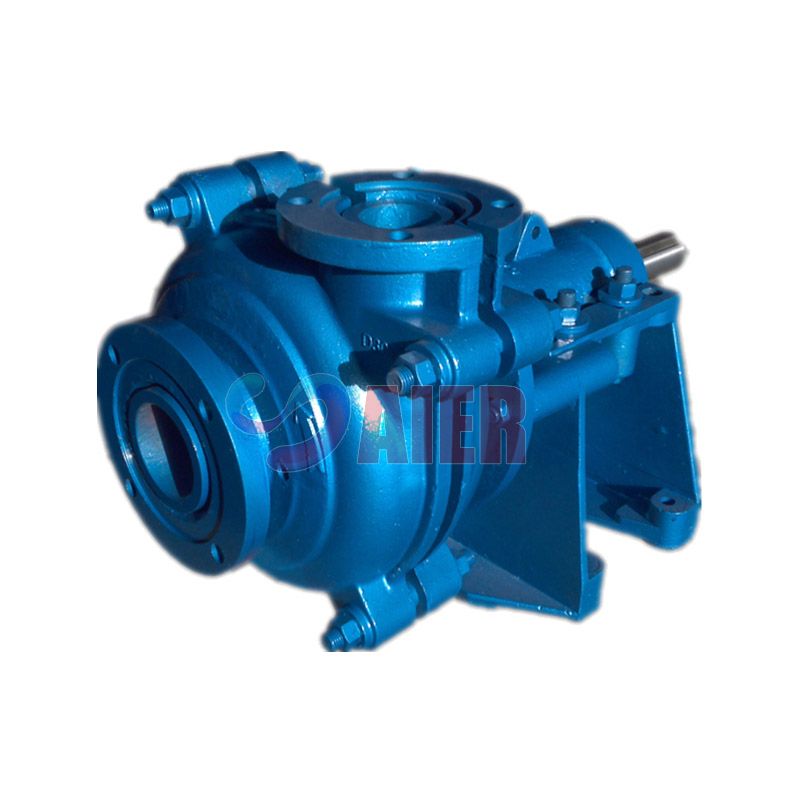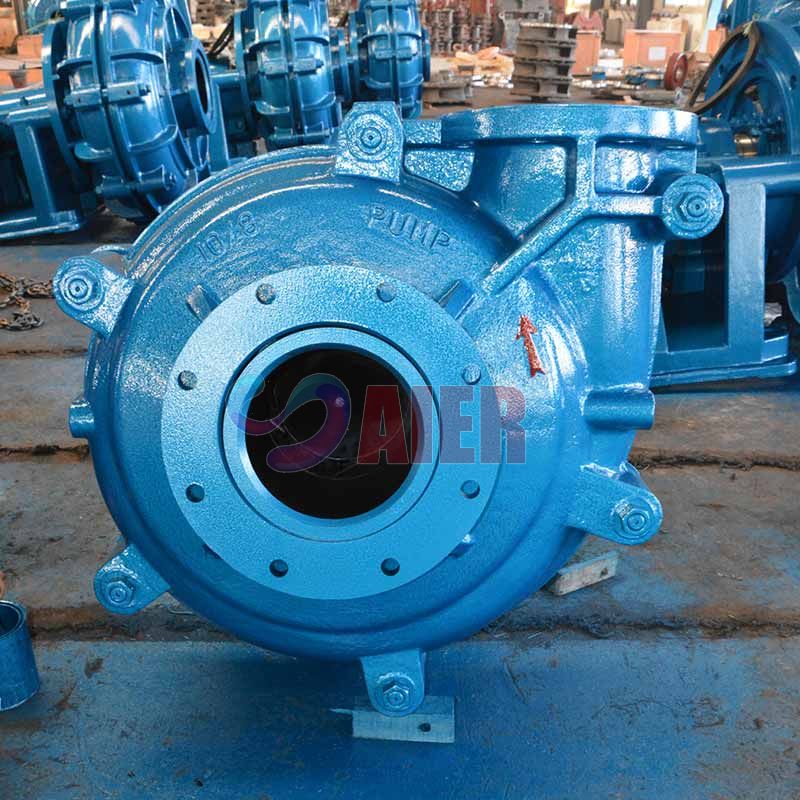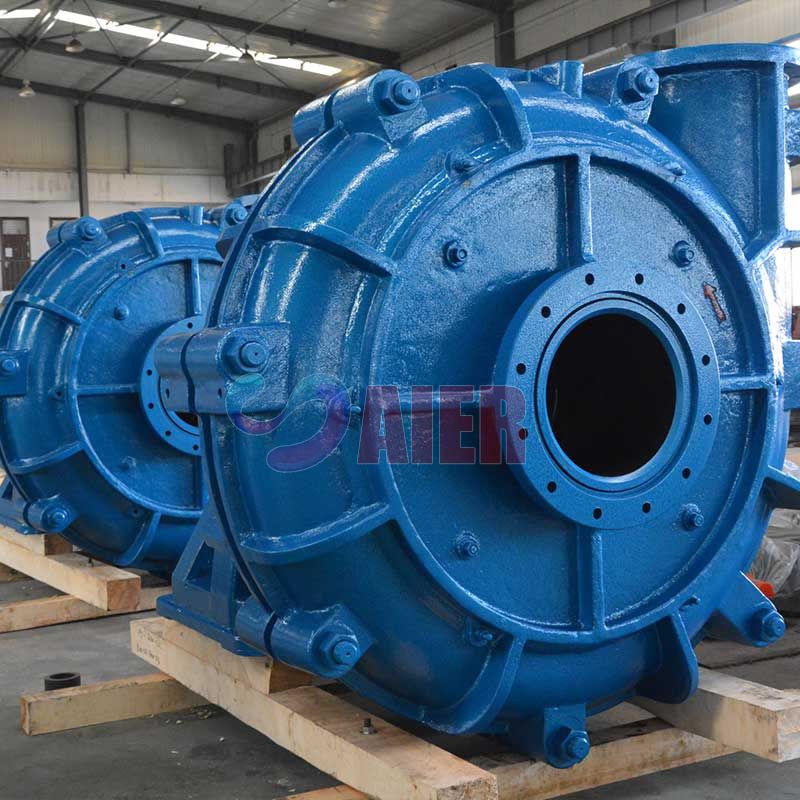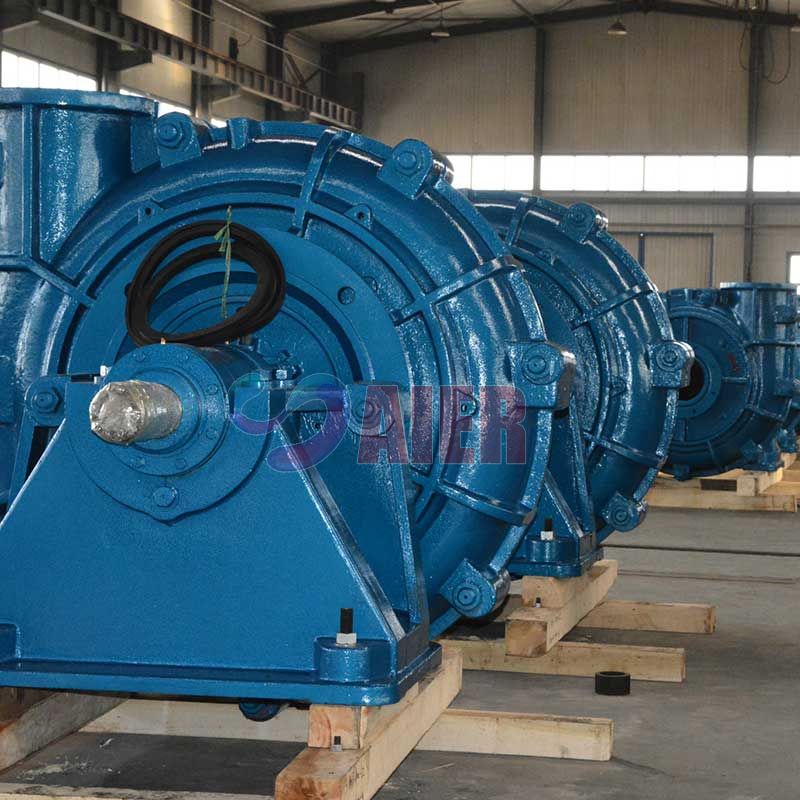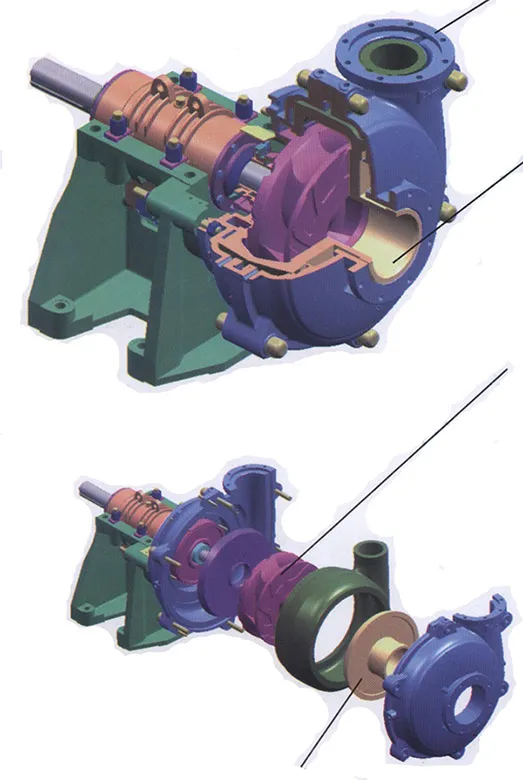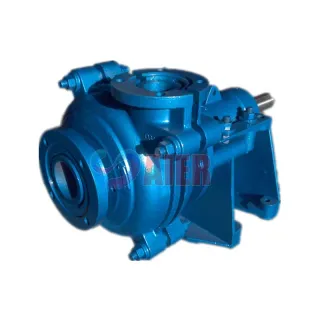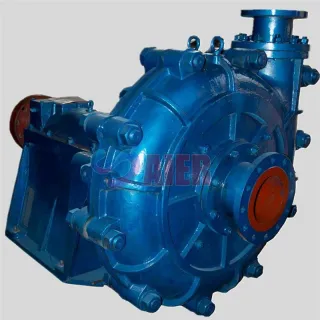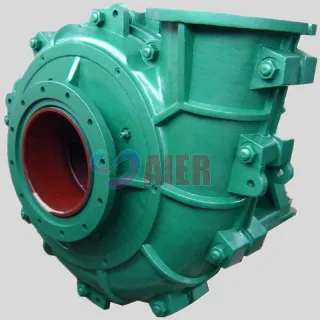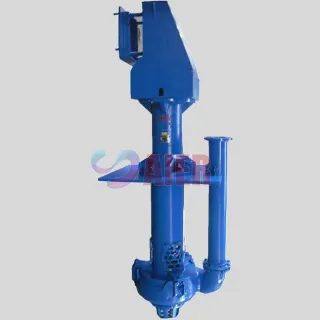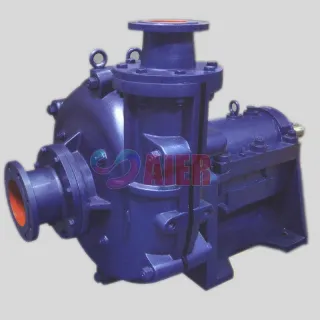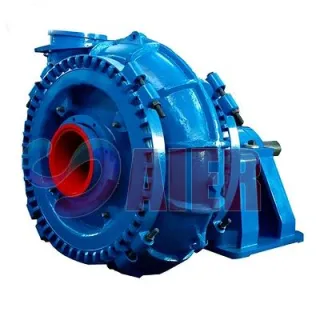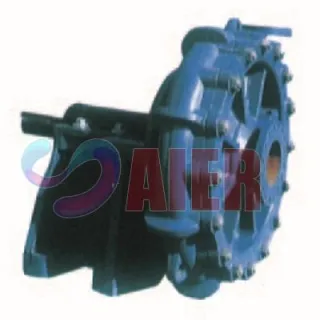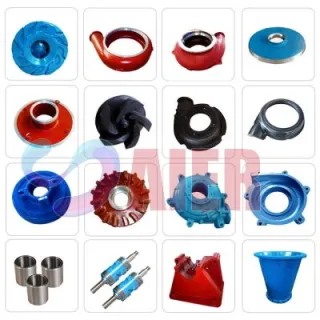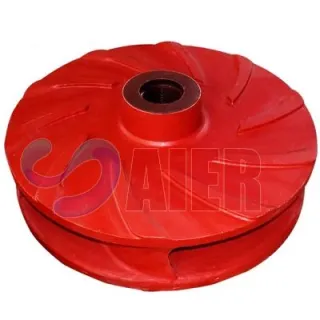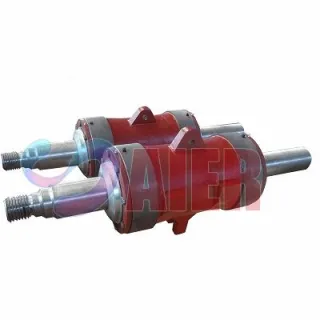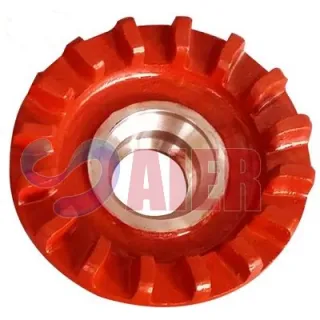WA Puma Putaamaha
He aha te papu slurry mahi taumaha?
WA raupapa papu slurry mahi taumaha he cantilevered, whakapae, rapa tūturu ranei whakarewa maitai raina papua slurry centrifugal. I hoahoatia mo te whakahaere i nga slurries abrasive, teitei kiato i roto i te konganuku, maina, waro, hiko, rauemi hanga me etahi atu tari ahumahi.
Nga whakaritenga papu mahi taumaha
Rahi: 1" ki te 22"
Raukaha: 3.6-5400 m3/h
Upoko: 6-125 m
Nga totoka tuku: 0-130mm
Kukū: 0%-70%
Rauemi: Hyper chrome alloy, Rupa, Polyurethane, Ceramic, Kowiri tira etc.
AIER® WA Heavy Duty Slurry Pump
Nga ahuatanga o te papu slurry
1. Ko te pereti anga mo nga papua raupapa WA he whakarewa maamaa, he raima elastomer whakarewahia ranei. Ko nga impellers he mea hanga mai i te whakarewa pakeke, i nga raina elastomer ranei i hangaia.
2. Ko nga hiri toka mo te raupapa WA ka taea te hiri hiri, hiri centrifugal, hiri miihini ranei.
3. Ka taea te whakanoho i te peka tuku i nga waahi o te 45 nga nekehanga ma te tono me te whakarite ki nga waahi e waru kia rite ki nga whakaurunga me nga tono. He maha nga momo taraiwa mo te kowhiringa, penei i te V-whitiki, te honohono ngawari, te pouaka miihini, te rerenga rereke o te taarua hiko, te tere tere o te silicon, me etahi atu.
4. In harsh conditions with sand, sludge, rocks and mud, ordinary slurry pumps tend to clog, wear and fail frequently.. But our heavy-duty slurry pumps are highly resistant to wear and corrosion, which means that the ora mahi o tatou papua slurry he pai ake i nga papua a etahi atu kaihanga.
Ko nga mahi taumaha ka pupuhi i nga tono angamaheni
Na te mea he tino atete ki te kakahu me te waikura a tatou papua whakangao taumaha WA, ka whakamahia nga papu mahi taumaha i roto i te whānuitanga o nga tono.
1. Te tukunga mira SAG, te tukunga mira poroporo, te tukunga o te Rod mil.
2. Puta waikawa Ni, kirikiri kirikiri, hiku taratara, phosphate matrix, kohuke concentrate.
3. Te panui taumaha, te huka pīti, te keri, te pungarehu o raro/rere, te huri kotakota, te kirikiri hinu, te kirikiri kohuke, te hiku pai, te parapara, te waikawa phosphoric, te waro, te rere, te matū tukanga, te penupenu me te pepa, te FGD, te whangai cyclone, etc .
Tohunga papu
| 200WA-ST: | 100WAJ-D: |
| 200: Putanga diameter: mm | 100: Putanga diameter: mm |
| WA: Momo papu: chrome alloy raina | WAJ: Momo papu: rapa raina |
| ST: Momo pereti anga | D: Momo pereti anga |
Ki te ako me pehea te whakaoti i o raru pupuhi, whakapā mai today! We are the slurry pump manufacturer that can help you solve your problems.
Hoahoa Hangahanga
|
|
Kohanga Kei roto i nga haurua o te riipene rino, i te rino ngongo ranei nga raina kakahu me te whakarato i nga kaha pehanga mahi teitei.
Whakawhitiwhiti whakarewa maama me nga raina elastomer whakarewa |
|
Kaipupuri Ko te impeller pea he elastomer whakarewa, he whakarewa maro ranei. Ko nga riu hiri ki te taha hohonu ka whakamama te pehanga hiri me te whakaiti i te hurihanga. He pai ake nga miro hiri maka-i mo nga slurries. |
Mating faces in hard metal liners are tapered to allow positive alignment during assembly and allow components to be easily removed for replacement.
Rauemi Wahi Pump
| Ingoa Wāhanga | Rauemi | Whakatakotoranga | HRC | Taupānga | Waehere OEM |
| Raina & Impeller | Te whakarewa | AB27: 23% -30% chrome rino ma | ≥56 | Ka whakamahia mo te ahua kakahu teitei ake me te pH i waenga i te 5 me te 12 | A05 |
| AB15: 14% -18% chrome rino ma | ≥59 | Ka whakamahia mo nga ahuatanga kakahu teitei ake | A07 | ||
| AB29: 27%-29% chrome rino ma | 43 | Ka whakamahia mo te ahua pH iti rawa mo te FGD. Ka taea hoki te whakamahi mo te ahua kawa iti me te whakaurunga desulfuration me te pH kaua e iti iho i te 4 | A49 | ||
| AB33: 33% -37% chrome rino ma | Ka taea te kawe slurry hāora me te pH kaua e iti iho i te 1 penei i te phospor-plaster, waikawa nitric, vitriol, phosphate etc. | A33 | |||
| rapa | R08 | ||||
| R26 | |||||
| R33 | |||||
| R55 | |||||
| Te whakakai me te mowhiti expeller | Te whakarewa | B27: 23% -30% chrome rino ma | ≥56 | Ka whakamahia mo te ahua kakahu teitei ake me te pH i waenga i te 5 me te 12 | A05 |
| Te rino hina | G01 | ||||
| Pouaka Whakapiri | Te whakarewa | AB27: 23% -30% chrome rino ma | ≥56 | Ka whakamahia mo te ahua kakahu teitei ake me te pH i waenga i te 5 me te 12 | A05 |
| Te rino hina | G01 | ||||
| Anga / Pereti uhi, whare kawe me te turanga | Te whakarewa | Te rino hina | G01 | ||
| Te rino ngongo | D21 | ||||
| Hekau | Te whakarewa | waro maitai | E05 | ||
| Karekau kakau, whakakai rama, whakakai, kaki kaki, repe repe | Kowiri tira | 4Cr13 | C21 | ||
| 304 SS | C22 | ||||
| 316 SS | C23 | ||||
| Nga mowhiti hono me nga hiri | rapa | Butyl | S21 | ||
| EPDM rapa | S01 | ||||
| Nitrile | S10 | ||||
| Hypalon | S31 | ||||
| Neoprene | S44/S42 | ||||
| Viton | S50 |
Hoahoa Kōwae Whakawhiti
|
He pou papu te diameter nui, porotakaroa Te hanga o te kawenga taumaha, te kawe ine ma te whakamahi i te whakahinu hinu, te whakahinuhinu hinu ranei; whakatuwheratia i roto i te rangatū, nga āhuatanga hanga o te rōrahi iti me te pono tiketike. |
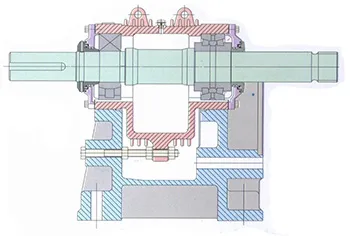 |
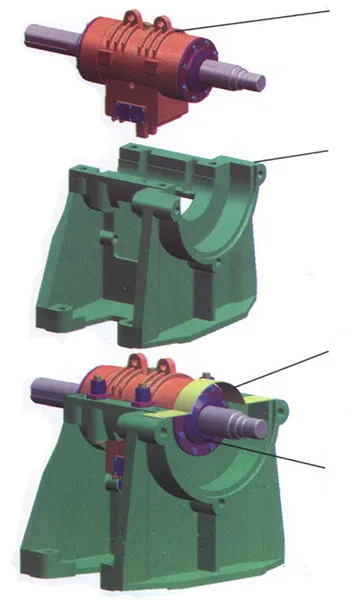 |
Huihuinga Whanau Porou Ko te rakau diameter nui me te whakairi poto ka whakaiti i te paheketanga me te wiri. Kei roto i te kariri kawe kawe taumaha. Putunga Puma Whakamaua te papu ki te turanga me te iti rawa o nga tutaki me te whakatika i te impeller ki te waahi pai i raro i te whare kawe. Ko te taupoki wai e kore e rere te wai turuturu. Ka aukati te uhi whakamarumaru i te wai turuturu mai i te taiapa kawe.
|
Hoahoa Kōwae Hiri Hiri
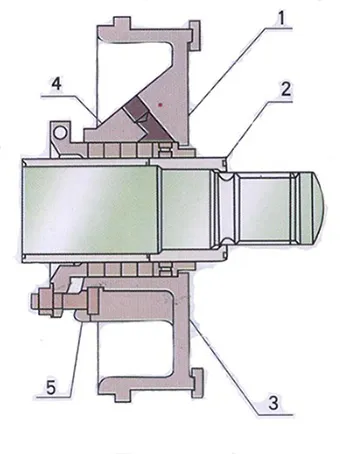 |
1. Pouaka Tapaki 2. Mowhiti Rarama o mua 3. Tarapi 4. Te Taapapa Gland 5. Manga Manga |
|
1. Tuku Gland 2. Kaipatu 3. Tarapi 4. Taapapa Puka 5. Mowhiti Rarama 6. Te Taapapa Gland 7. Kapu Hinu |
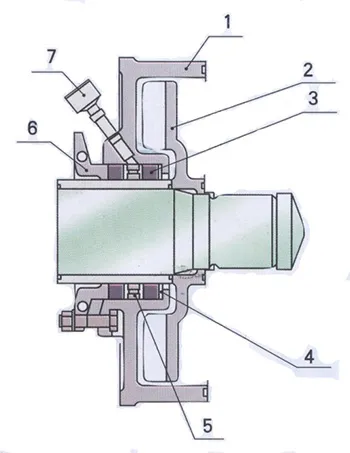 |
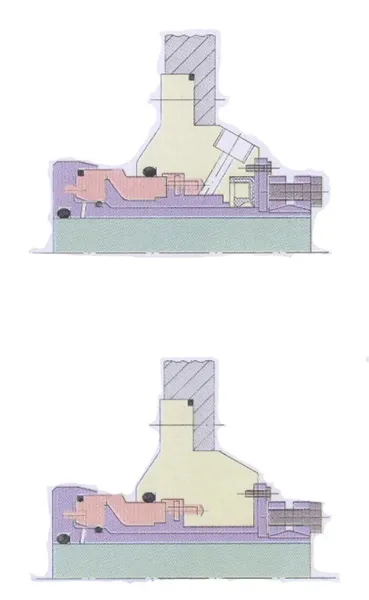 |
GRJ Hiri Miihini Ka whakamahia te momo GRG mo te wai e kore e whakaaetia kia waimeha. HRJ Hiiri Miihini Ko te momo HRJ e whakamahia ana mo te wai whakamere. Ko te karaima pakeke me te hoa rangatira ka whakamahia mo nga waahanga o nga waahanga waku. Kei a ia te kaha abrasive resistance me te wiri tohu ki te kii ka taea e te kaihoko te makona te paanga o te hiri i roto i nga momo ahuatanga.
|
Mahinga Mahinga
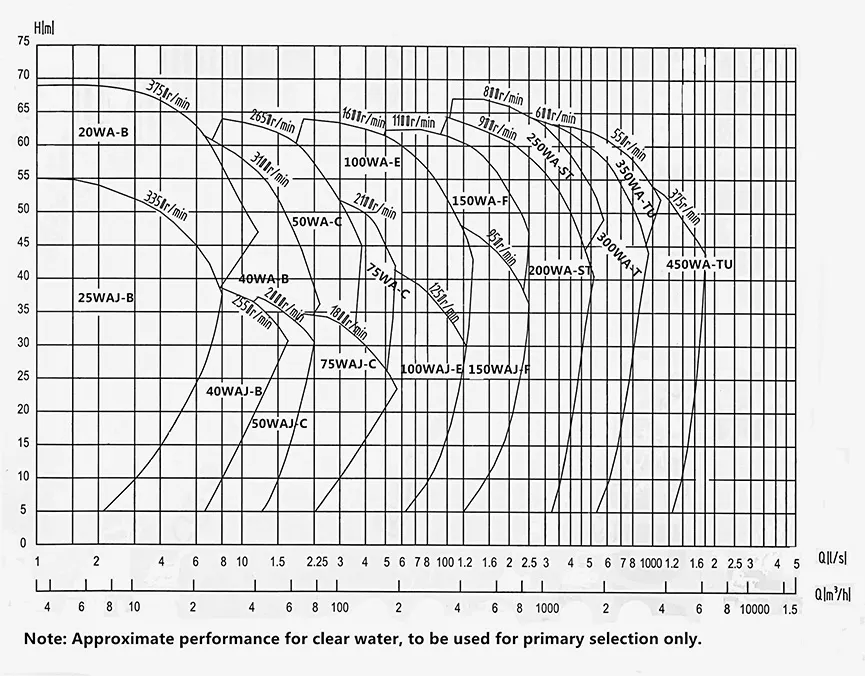
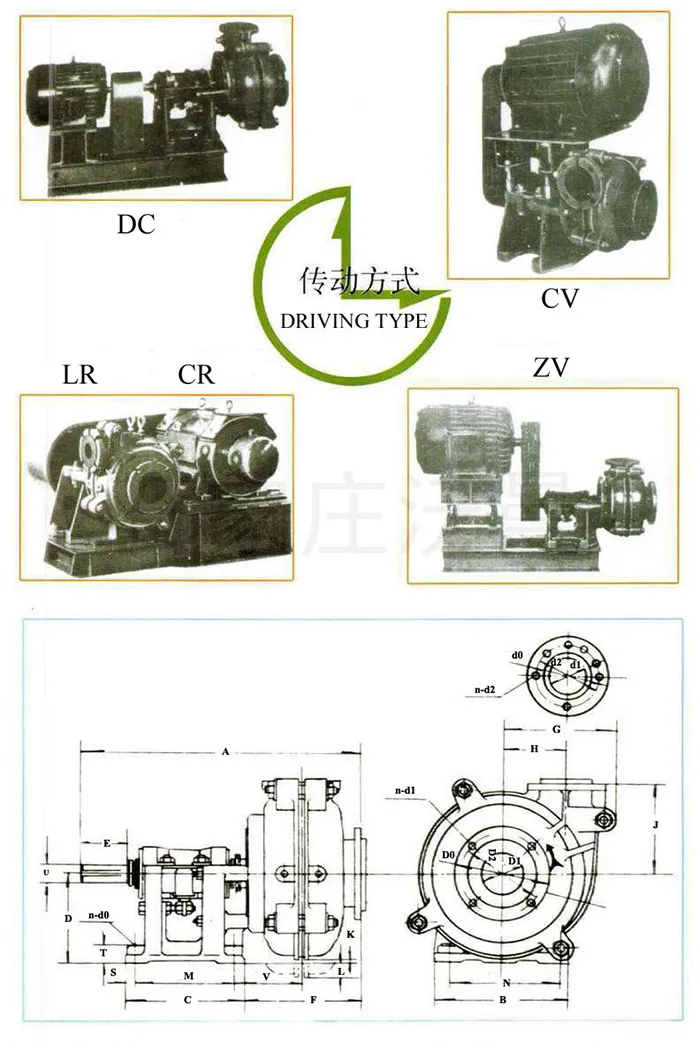
Ahu Tāuta
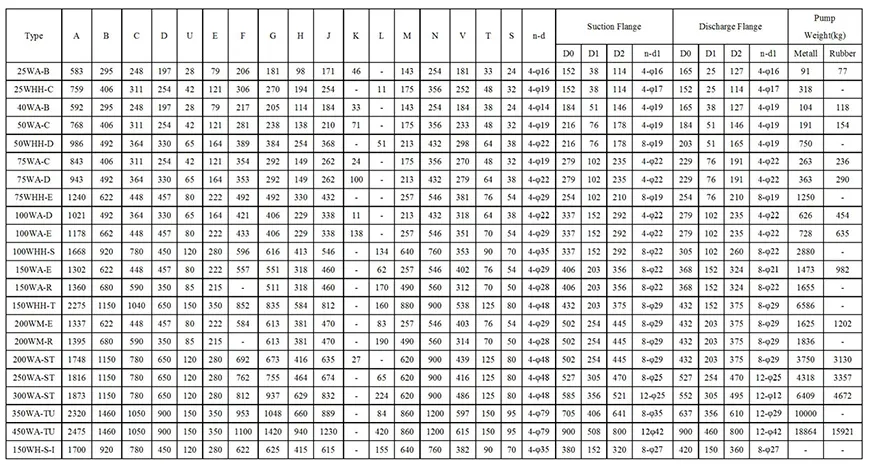
Pupu Pump Impeller Kōwhiringa
Slurry pump impeller is one of the most important parts of centrifugal slurry pumps. Depending on the application, slurry pump impeller selection is crucial to slurry pump performance. Slurry applications can be especially hard on the impeller of slurry pumps because of their abrasive nature. In order slurry pumps operates efficiently and stand up to the test of time, impeller has to be selected properly for slurry pumps.
1. Momo Pump Impeller Slurry
E toru nga momo rereke o nga putere papu slurry; tuwhera, katia, me te ahua-tuwhera. Kei ia tangata ona ake kaha me ona ngoikoretanga, i runga ano i te tono. Ko etahi he pai ake mo te whakahaere totoka, ko etahi he pai ake mo te tino pai.
Any type of impeller can be used in slurry applications, but closed slurry pump impellers are more common because they are high efficient and abrasion Resistance,. Open slurry pump impellers are usually used well for high concentration solids as they are less likely to clog. For example, the small fibers in paper stock which, in high densities, may have a tendency to clog the impeller. Pumping slurry can be difficult.
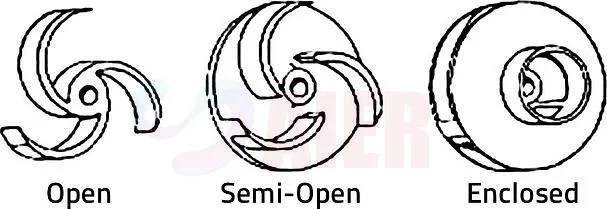
2. Pupu Pump Impeller Rahi
The size of slurry pump impeller must be considered to ensure it holds up against abrasive wear. Slurry pump impellers are generally larger in size when compared to slurry pumps for less abrasive liquids. The more “meat” the impeller has, the better it will hold up to the task of pumping harsh slurry mixtures. Just think of slurry pump impeller as a football team’s offensive line. These players are usually large and slow. Throughout the whole game they are beaten up, over and over again, but expected to withstand the abuse. You wouldn’t want small players in this position, just like you wouldn’t want a small impeller on your slurry pumps.
3. Tere Pupa Puta
Process speed doesn’t have anything to do with choosing slurry pump impeller, but it does have an effect on the life of slurry pump impeller. It is important to find the sweet spot that allows the slurry pump to run as slow as possible, but fast enough to keep solids from settling and clogging. If pumping too fast, the slurry can quickly erode the impeller due to its abrasive nature. This is why it is important to select a larger impeller if possible.
When dealing with slurry, you generally want to go bigger and slower. The thicker the impeller, the better it will hold up. The slower the pump, the less erosion will inflict on the impeller. However, the impeller isn’t the only thing to worry in slurry pump when dealing with slurry. Tough, durable materials of construction are necessary most of the time. Metal slurry pump liners and wear plates are common in slurry applications.
Te whakaurunga o te Pump Slurry
Whakapae Pupu Pupu Whakapae
The mounting and installation of horizontal slurry pumps are generally subject to a number of considerations, including floor space, overhead space for lifting and the likelihood of flooding from spills. Pumps in critical services are often paired in duty/standby mode so that maintenance can be carried out on one pump while the other is running.
Large slurry pumps with high-energy motors - and perhaps with speed reduction gearboxes - would generally be mounted with the shaft axes in the same horizontal plane for ease of maintenance access.
A slurry pump with a belt drive may have the motor mounted beside it if there is sufficient floor space. However, if floor space is limited or there is a risk of flooding, the motor can be mounted above it either directly overhead (also known as “C drive”) or to its rear (reverse overhead mounting or “Z drive”).
Vertical Slurry Pump Installation
Vertical cantilever shaft sump pumps should be selected so that the suction inlet is close to the sump floor. If shaft length is limited by the required running speed and power to be transmitted, a suction pipe (generally two meters long) may be fitted to the suction branch to ensure the sump can be emptied.

